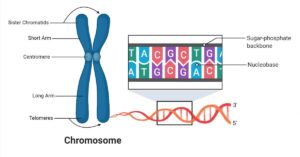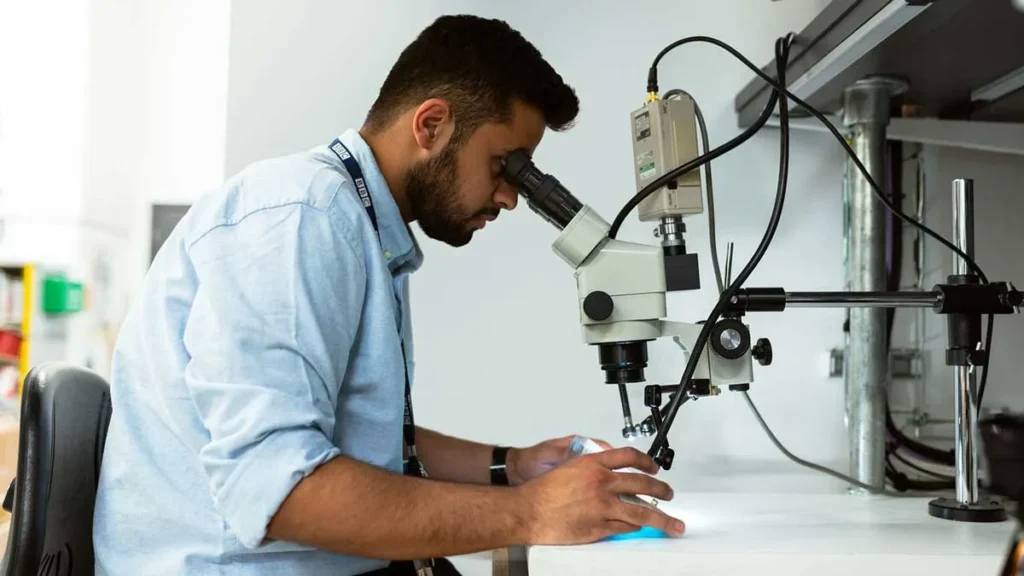Biological membranes feature a lipid bilayer where proteins and carbohydrates may associate or bond.
Membrane lipids play crucial roles in shaping biological membranes, such as cell membranes and intracellular membranes, and in facilitating membrane functions like organizing biological processes within compartments.
Primarily composed of phospholipids, glycolipids, and cholesterol, membrane lipids form bilayers and collaborate with integral and peripheral membrane proteins to establish functional membranes. This bilayer exhibits fluidity, allowing rapid diffusion of lipid molecules within each layer.
Being amphipathic, membrane lipid molecules come in various types, with phospholipids being the most abundant. When introduced to water, they spontaneously form bilayers, creating enclosed compartments capable of self-resealing if damaged.
The lipid composition varies between the inner and outer monolayers, reflecting the diverse functions of the cell membrane’s two sides. Additionally, different cell types and even different membranes within a single eukaryotic cell exhibit distinct lipid mixtures.

Membrane Lipid Composition
The lipid composition of membranes is complex, with a diverse array of lipid molecules forming their structure.
In bacterial plasma membranes, a predominant phospholipid type is often present, and cholesterol is typically absent. Mechanical stability is reinforced by an outer cell wall.
In contrast, the plasma membranes of most eukaryotic cells exhibit greater diversity, containing significant amounts of cholesterol along with a mixture of various phospholipids.
The variety of lipid molecules within a cell’s plasma membrane can surpass 1000.
Membrane lipids can generally be categorized into three primary groups:
- Glycerol‐based lipids
- Cholesterol
- Ceramide‐based sphingolipids
Glycerol‐based lipids
Glycerol-based lipids encompass two primary categories: glycosylglycerides and phospholipids.
Glycosylglycerides:
- Belong to a complex lipid family where the glycerol backbone’s sn-3 position is linked to a glycosyl moiety like galactose or glucose.
- Represent the most abundant glycerolipids in membranes.
Phospholipids:
- In phospholipids, the sn-1 and sn-2 positions are bound to fatty acids, while the sn-3 position is linked to a phosphate group, which in turn attaches to a polar headgroup.
- Despite being greatly influenced by the fatty acid component, phospholipids are typically categorized based on their polar headgroup.
- The plasma membrane of many mammalian cells predominantly contains four major phospholipids: phosphatidylcholine, phosphatidylethanolamine, phosphatidylserine, and sphingomyelin.
- While other phospholipids, such as inositol phospholipids, exist in smaller quantities, they hold significant functional roles, particularly in cell signaling pathways.
Cholesterol
- Cholesterol possesses a hydroxyl group that engages with the phosphate head of phospholipids, while its substantial steroid segment interacts with the acyl chains of phospholipids.
- These interactions play pivotal roles in modulating membrane fluidity, membrane arrangement, propensity for non-lamellar phases, and the creation of microdomains.
- Eukaryotic plasma membranes are notably rich in cholesterol, with concentrations reaching up to one molecule per phospholipid molecule.
Ceramide‐based sphingolipids
- Ceramide-based sphingolipids are characterized by their sphingoid-base backbone, typically a 2-aminoalkane-1,3-diol with a 2S,3R stereochemistry.
- The amphipathic nature of these molecules, with a highly hydrophobic core and hydrophilic surface, enables the formation of impermeable lipid bilayers. This characteristic is a defining feature of biological and model membranes.
Membrane Lipid Structure
- In aqueous environments resembling biological conditions, most phospholipids naturally arrange into lipid bilayers.
- However, certain lipids can adopt non-lamellar structures under various physiological or non-physiological circumstances.
- Lipids may exhibit different phases due to lipid mesomorphism, and within cell membranes, they may form distinct finite structures known as membrane microdomains.
- Membranes consist of molecules that retain their individual characteristics to some degree.
- Phospholipids like phosphatidylcholine (PC), with bulky polar heads, typically have a cylindrical molecular shape and tend to associate with other cylinder-like phospholipids to generate planar structures.
- Conversely, some lipids favor non-bilayer structures.
- Lipids with cone-shaped configurations, such as lysophosphatidylcholine (LPC) with bulky polar heads, or truncated cone-shaped lipids like phosphatidylethanolamine (PE) with small headgroups, may form spherical micelles or tubular structures with positive (HI) or negative curvature (HII), respectively.
Functions of Membrane Lipids:
- While membrane proteins are often highlighted for their crucial roles, lipids also play significant roles in various processes.
- Membrane-spanning proteins, permanently embedded within the lipid bilayer, contribute to structural integrity and selective permeability.
- Changes in the lipid composition of membranes can modulate the function of integral membrane proteins.
- Peripheral proteins, which associate with the membrane’s surface, interact with and are influenced by membrane lipids.
- Membrane lipids engage in dynamic interactions, influencing membrane properties such as thickness, surface packing, and mobility.
- Specific lipid head groups are essential for the function of certain membrane-bound enzymes.
- Lipid head groups serve as docking sites for cytosolic proteins, facilitating cellular processes.
- Certain extracellular signals activate phospholipases, enzymes that cleave phospholipids in the plasma membrane, generating intracellular signaling molecules.










